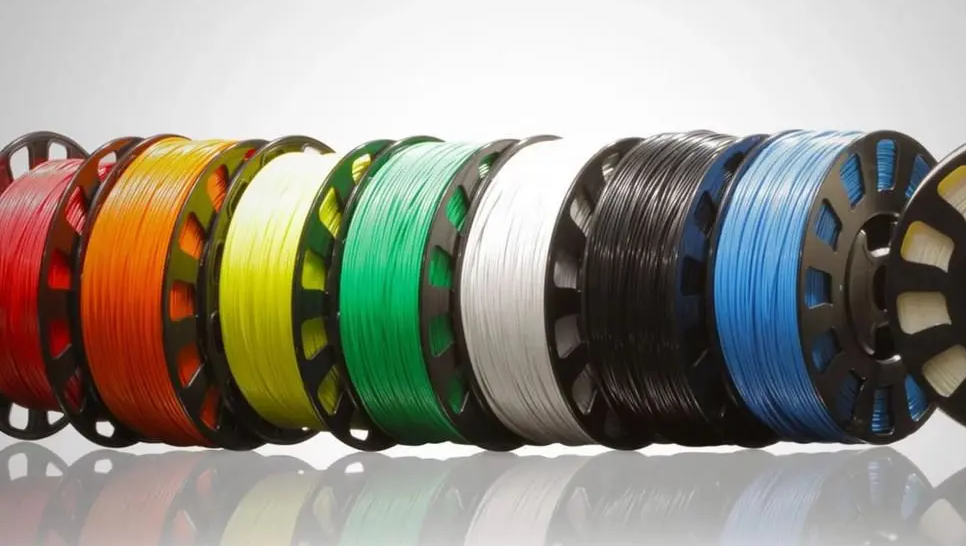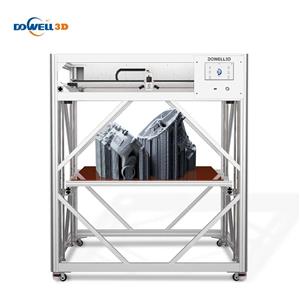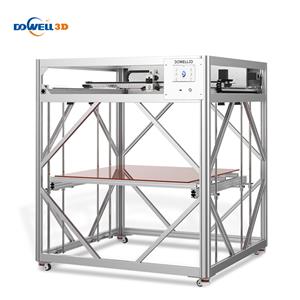Guide to 3D Printing:Materials, Types, Applications, and Properties
Guide to FDM 3D Printing:
Materials, Types, Applications, and Properties
There are dozens of plastic materials available for 3D printing, each with their own unique qualities that make them best suited for specific uses. To simplify the process of finding the best material for a particular part or product, let’s first take a look at the main types of plastics and the different 3D printing processes.
Types of Plastic Materials
There are two main types of plastics:
Thermoplastics are the most commonly used type of plastic. Their main difference from thermosets is their ability to undergo multiple cycles of melting and solidification. Thermoplastics can be heated and formed into a desired shape. The process is reversible, as no chemical bonding occurs, so thermoplastics can be recycled, melted, and reused. A common analogy for thermoplastics is butter, which can be melted, resolidified, and melted again. Its properties change slightly during each melting cycle.
Thermosets (also known as thermosetting plastics) remain in a permanent solid state after curing. The polymers in thermosets crosslink during the curing process, which is caused by heat, light, or suitable radiation. Thermosets decompose when heated rather than melting, and do not reform when cooled. It is impossible to recycle thermosets or return the material to its basic components. Thermosets are like cake batter, and once baked into the cake, they cannot be melted back into the batter.
Plastic 3D Printing Processes
The three most established plastic 3D printing processes are as follows:
Fused Deposition Modeling (FDM) 3D printers melt and extrude thermoplastic filament, which is deposited layer by layer on the build area by the printer nozzle.
Stereolithography (SLA) 3D printers use lasers to cure thermosetting liquid resins into hardened plastics, a process called photopolymerization.
Selective Laser Sintering (SLS) 3D printers use high-powered lasers to melt small particles of thermoplastic powder.
FDM 3D Printing
Fused deposition modeling (FDM), also known as fused filament fabrication (FFF), is the most widely used form of 3D printing at the consumer level, fueled by the emergence of hobbyist 3D printers.
This technique is well-suited for basic proof-of-concept models, as well as quick and low-cost prototyping of simple parts, such as parts that might typically be machined.
Consumer level FDM has the lowest resolution and accuracy when compared to other plastic 3D printing processes and is not the best option for printing complex designs or parts with intricate features. Higher-quality finishes may be obtained through chemical and mechanical polishing processes. Industrial FDM 3D printers use soluble supports to mitigate some of these issues and offer a wider range of engineering thermoplastics or even composites, but they also come at a steep price.
As the melted filament forms each layer, sometimes voids can remain between layers when they don’t adhere fully. This results in anisotropic parts, which is important to consider when you are designing parts meant to bear load or resist pulling.

FDM 3D printing materials are available in a variety of color options. Various experimental plastic filament blends also exist to create parts with wood- or metal-like surfaces.
Popular FDM 3D Printing Materials
The most common FDM 3D printing materials are ABS, PLA, and their various blends. More advanced FDM printers can also print with other specialized materials that offer properties like higher heat resistance, impact resistance, chemical resistance, and rigidity.
MATERIAL | FEATURES | APPLICATIONS |
ABS (acrylonitrile butadiene styrene) | Tough and durable | Functional prototypes |
PLA (polylactic acid) | The easiest FDM materials to print | Concept models |
PETG (polyethylene terephthalate glycol) | Compatible with lower printing temperatures for faster production | Waterproof applications |
Nylon | Strong, durable, and lightweight | Functional prototypes |
TPU (thermoplastic polyurethane) | Flexible and stretchable | Flexible prototypes |
PVA (polyvinyl alcohol) | Soluble support material | Support material |
HIPS (high impact polystyrene) | Soluble support material most commonly used with ABS | Support material |
Composites (carbon fiber, kevlar, fiberglass) | Rigid, strong, or extremely tough | Functional prototypes |





